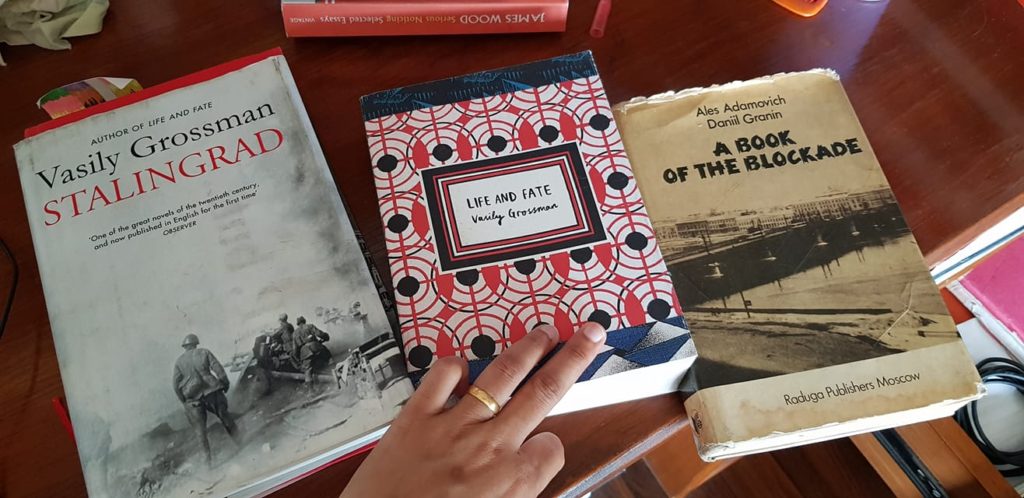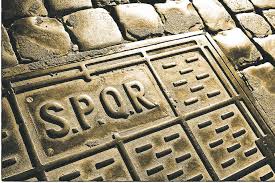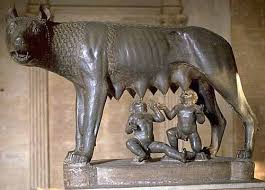Dr Radha Kumar is a historian and a policy analyst who has written several well-regarded books on ethnic conflict and feminism. She was one of the interlocutors appointed for Jammu and Kashmir by the Manmohan Singh administration in 2010. Paradise at War is her latest book on Jammu and Kashmir published by Aleph.
According to the book blurb:
Paradise at War is Dr Radha Kumar’s political history of Kashmir, a book that attempts to give the reader a definitive yet accessible study of perhaps the most troubled part of India. Beginning with references to Kashmir as ‘a sacred geography’ in the Puranas, Kumar’s account moves forward in time through every major development in the region’s history. It grapples with the seemingly intractable issues that have turned the state into a battleground and tries to come up with solutions that are realistic and lasting.
Situating the conflict in the troubled geopolitics of Kashmir’s neighbourhood, Kumar unpicks the gnarled tangle of causes that have led to the present troubles in the region, from wars and conquest to Empire and the growth of nationalism; the troubled accession of the state to India by Maharaja Hari Singh during Partition; Pakistani attacks and the rise of the Cold War; the politics of the various parts of the former princely state including Jammu and Kashmir, and the areas administered by Pakistan; the wars that followed and the attempts that Indian, Pakistani and Kashmiri leaders, starting with Sheikh Abdullah and Jawaharlal Nehru, made to find peaceful solutions, including taking the Kashmir issue to the UN, which had unintended consequences for India; the demand for plebiscite; the Simla Agreement, turning the ceasefire line into the Line of Control; communal riots in the 1980s and the growth of insurgency; increase in security forces in the state in the 1990s leading to public resentment; and the guerrilla occupation of Hazratbal, the fifteenth-century mosque. Showing that a changed Post-Cold War milieu offered new opportunities for peace-making that were restricted by domestic stresses in Pakistan, Kumar analyses the Lahore Declaration and its undoing with the Kargil operation; the morphing of insurgency into an Islamist jihad against India; India’s attempts to parley with separatist groups; and the progress made towards a Kashmir solution via peace talks by various Indian and Pakistani governments between 2002 and 2007.
Kumar’s descriptions of the contemporary situation—the impact of 9/11 and the war on terrorism; the Afghan war and the Mumbai attacks which created pressure on Pakistan to take action against radical Islamists; the blowback in Pakistan resulting in the growing radicalization of Pakistani institutions such as the judiciary and its spill over in Kashmir; the Indian government’s failure to move Kashmir into a peacebuilding phase; the trouble with AFSPA; the anti-India feelings that were triggered by counter-insurgency responses in 2010, the contentious coalition of 2014 and the killing of suspected terrorist Burhan Wani in 2016—underline the tragedies which ensue when conditions, timing and strategy are mismatched.
Drawing on her experience as a government interlocutor, Kumar chastises the Indian government for never failing ‘to snatch defeat from the jaws of victory when it comes to the state’s political grievances’. Equally, she shows how Pakistan’s Kashmir policy has been ‘an unmitigated disaster’. While arguing that India can do a great deal to reduce violence and encourage reconciliation within the former princely state, she concludes that if Kashmir is ever to move towards lasting peace and stability, the major stakeholders as well as regional and international actors will need to work together on the few feasible options that remain.
Timely and authoritative, the book cuts through the rhetoric that cloaks Kashmir to give the reader a balanced, lucid and deeply empathetic view of the state, its politics and its people.
With the publisher’s permission here is an extract ( p. 339-341) from Dr Kumar’s concluding chapter entitled “Conclusion: Faint Hope for a Peace Process”.
****
Looking back over the
history of Jammu and Kashmir, the last seventy years have seen a tragic
collision between aspirations for democracy and the grim realities of war.
After centuries of imperial rule, the territorial state of Jammu and Kashmir
emerged in the nineteenth century and the political state only after India and
Pakistan became independent countries. From 1947, two opposing trajectories
were evident. On the one hand, India–Pakistan conflict devastated daily life
and severely hampered governance in the former princely state. On the other
hand, all parts of the state steadily improved economically, though their
economies remained heavily aid-reliant. Their residents acquired education and
healthcare where once, not so long ago, they did not. Roads and rail lines were
built, enabling connectivity and trade. Natural resources such as water were
developed, and even though these resources were shared with India and Pakistan,
residents still had more than they did sixty years ago.
Politically, however,
there was a steady decline, from the first flush of hope in a post-monarchical
order to growing disappointment and anger spurred by war and conflict every
fifteen to twenty years. Albeit in sharply divergent ways, each of the divided
parts of the former princely state found that its status and rights were
determined by conflict and its government’s powers varied according to security
and economic dependence on India or Pakistan. It seems counter-intuitive to say
that the people of the Kashmir valley suffered the most poisonous politics of
the regions of the former princely state, when they had a greater measure of
democracy and civil rights, on paper, than their counterparts across the Line
of Control. But the Kashmir valley also suffered the most stifling conditions,
because it was the arena of violent conflict.
Looking back over the
past decade or more, it can be seen that the Pakistan Army’s hostility towards
India has cumulatively increased rather than decreased after 9/11. Musharraf
cooperated with the US against the Taliban on the grounds that if he did not,
it would advantage India. The first few years following 9/11 saw an
intensification of cross-border violence in Jammu and Kashmir. During the peace
process that followed, with considerable international facilitation, violence
decreased sharply in Jammu and Kashmir but terrorist attacks against India
rose, both in other parts of India and in Afghanistan. Eventually, the peace
process was put on hold by a beleaguered Musharraf in 2007.
The civilian
government that took over in Pakistan did not build on the framework for
Kashmir of the Musharraf backchannel. But they took cautious steps to improve
trade, and developed customs and transit infrastructure at the Wagah border.
Though the 26/11 attacks were the most horrific terrorist act in years, Pakistan-sponsored
terrorism against India declined overall. When the Zardari administration was
succeeded by the Sharif administration in 2013, the initial months were
promising. Sharif and Modi did briefly try to revive a peace process, but
guerrillas succeeded in disrupting their efforts and Sharif soon fell foul of
the Pakistani military.
Clearly, each country
has yet to come to terms with the other’s red lines. Pakistan’s red line was,
and remains, that terrorism would not be curbed unless Kashmir was also
discussed. For India, terrorism had to end. The hard facts were that Pakistan
was unlikely to give up support for anti-India groups like the Lashkar and
Jaish until conflicts over Kashmir, Sir Creek and Siachen were resolved. The
best that could be expected was that the Pakistan Army, under pressure, might
restrain them. Equally, India would not settle with Pakistan until convinced
that its government was ending support for anti-India militancy, including by
non-state actors. First Vajpayee, then Musharraf, and then Singh, Zardari and
Sharif, learned these hard facts the hard way, through trial and error, but the
learning curve in each country appeared to be individual rather than
institutional or collective.
Most Indians believe
that the Pakistani position would change were the military to accept civilian
precedence, but the chances of that happening are nil. Many would further argue
that a sustained military-to-military dialogue would also soften the hard-line
attitude of the Pakistan Army. Thus far, however, such a dialogue has proved
elusive. The fact that the Pakistani NSA appointed in October 2015 was a
retired general gave hope of a direct line to the military. After Pathankot,
the jury was still out on whether this access helped. The two countries’ chiefs
of army staff do not meet and their DGMOs have met only occasionally to talk
CBMs. There have been intermittent and secret NSA talks since 2016, with no
discernible impact.
A large and growing
new challenge for both countries has been how to deal with the media. In the
past four years, the role of electronic media in both countries has been
understandably but unforgivably negative. With little substantive information
to go on, Indian and Pakistani talking heads resorted to such virulent slanging
matches in the run-up to the India– Pakistan NSA talks in August 2015 that they
had to be cancelled. Some anchors questioned whether Pakistan fell into a trap
by reacting so strongly to the Indian media, but this begged the question of
whether the Indian media themselves fell into a spoilers’ trap. The Indian
media muted criticism to some extent in 2018, with most channels supporting the
ceasefire and questioning the toppling of the Mehbooba administration.
Astonishingly, the
Indian government has never failed to snatch defeat from the jaws of victory
when it comes to Jammu and Kashmir. From Nehru taking the conflict to the UN
and arresting Sheikh Abdullah, to Indira dismissing and replacing elected
governments, to Singh shying away from taking CBMs to political resolution, to
Modi withdrawing the ceasefire before it had time to take hold and the BJP
toppling the state’s coalition government[i]
—almost every Indian prime minister has shown the state pusillanimity at best
and authoritarianism at worst.
Pakistan’s leaders
have done no better. Some might argue they did worse. Expressions of dissent
were severely repressed and the powers of the elected leaders of
Pakistan-administered Kashmir were little more than municipal. Gilgit–Baltistan
suffered decades of sectarian conflict. But neither entity was subjected to the
gruelling and attritive violence that Jammu and Kashmir was. While the reason
was clear—India did not target Pakistan-administered Kashmir in the way that
Pakistan targeted Jammu and Kashmir—it did not mitigate the suffering in Jammu
and Kashmir.
As I write this
conclusion, the Jammu and Kashmir conflict is at its nadir. Levels of violence
continue to rise and abduction, torture and murder of Kashmiris in the security
and police forces is becoming a new normal. The people of the valley are more
alienated from mainland India than ever before and Jammu’s communal
polarization between Muslim- and Hindumajority districts is greater than ever
before.
Ladakh is the one
clear ray of hope despite the distance between its two districts, Leh and
Kargil. But its light cannot be shed on the valley and Jammu since it has
always been quite separate from the two, both physically and in its polity.
****
[i] Rajesh Ahuja and Mir Ehsan, ‘Ramzan ceasefire in Jammu and Kashmir to end, security ops will resume, says Rajnath Singh’, Hindustan Times, 17 June, 2018; ‘Mehbooba Mufti resigns after BJP pulls out of alliance with PDP in Jammu and Kashmir’, Times of India, 19 June, 2018.
22 February 2019




